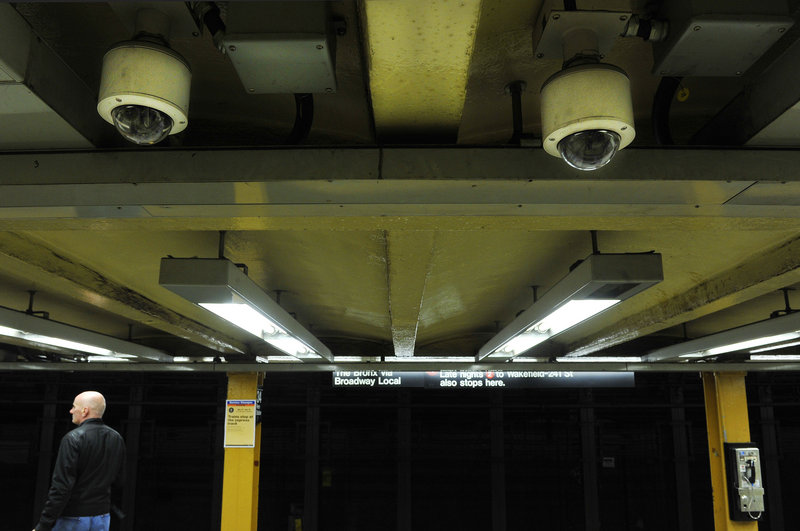NEW YORK – About half the 4,313 security cameras installed along New York City’s subways aren’t seeing a thing — a blind spot in the crime and terrorism safety net for the nation’s largest city.
“A lot of those cameras don’t work, and maybe someday we’re going to get very badly hurt because of it,” Mayor Michael Bloomberg said Tuesday.
While cameras are out of commission in the subway, the cash-strapped Metropolitan Transportation Authority has also been forced to cut police patrol shifts on major bridges and tunnels on the weekends.
The problem of missing video came to light after two men were stabbed to death on the subway — and there was no camera installed in the station to catch an image of the killer. Darnell Morel and Ricardo Williams, both 24, were killed in a fight that started around 5 a.m. Sunday at the Christopher Street station in downtown Manhattan.
The New York Police Department says it doesn’t depend on the surveillance cameras set up by the MTA — instead, officers patrol the subways and set up random bag searches in stations around the city.
Overall, crime is down in the subways, even as ridership increases. In 1990, there were about 50 crimes a day reported in the subway, and now there are about five, according to police. About 5 million people ride the subway every day, around a million fewer than in the ’90s.
The NYPD is installing thousands of cameras around the city and is using private surveillance installed in major buildings as part of a massive security initiative. In addition, 500 specialized cameras are in place — an image from one of those cameras led officers to a suspect wanted in the brutal assault of a woman in a bar a few weeks ago.
“As cameras proliferate, as we build more of them, they become more instrumental in solving crimes. They also act as a deterrent,” said Paul Browne, a Police Department spokesman.
But the MTA, which just last week approved $93 million in service cuts, is in charge of the cameras within the subway system. Of the 4,313 cameras, 2,270 are working and 2,043 aren’t.
Some are under construction and the agency is working to bring them online — an additional 900 should be up by June, the agency says. Some just plain don’t work because of heat, water or electrical problems.
And about 1,000 are held up by litigation. A division of Lockheed Martin hired to install the systems sued the MTA last year, blaming the agency for delays preventing them from meeting construction deadlines. The MTA countersued, saying that Lockheed Martin had provided faulty products. Lockheed Martin would not comment Tuesday.
Meanwhile, about 600 agents stationed in the subways have been laid off.
A working, comprehensive surveillance system for the city’s many bridges and automobile tunnels is monitored 24 hours a day. But some of the weekend patrol shifts for officers who regularly patrol the bridges — and who could respond to a threat within minutes — have been eliminated at the Queens Midtown Tunnel and the Verrazano Narrows Bridge, which connects Brooklyn and Staten Island.
Greg Lombardi, vice president of the Bridge & Tunnel Officers Benevolent Association, said the cuts will make it more difficult to catch any miscreants.
Copy the Story Link
Send questions/comments to the editors.



Success. Please wait for the page to reload. If the page does not reload within 5 seconds, please refresh the page.
Enter your email and password to access comments.
Hi, to comment on stories you must . This profile is in addition to your subscription and website login.
Already have a commenting profile? .
Invalid username/password.
Please check your email to confirm and complete your registration.
Only subscribers are eligible to post comments. Please subscribe or login first for digital access. Here’s why.
Use the form below to reset your password. When you've submitted your account email, we will send an email with a reset code.